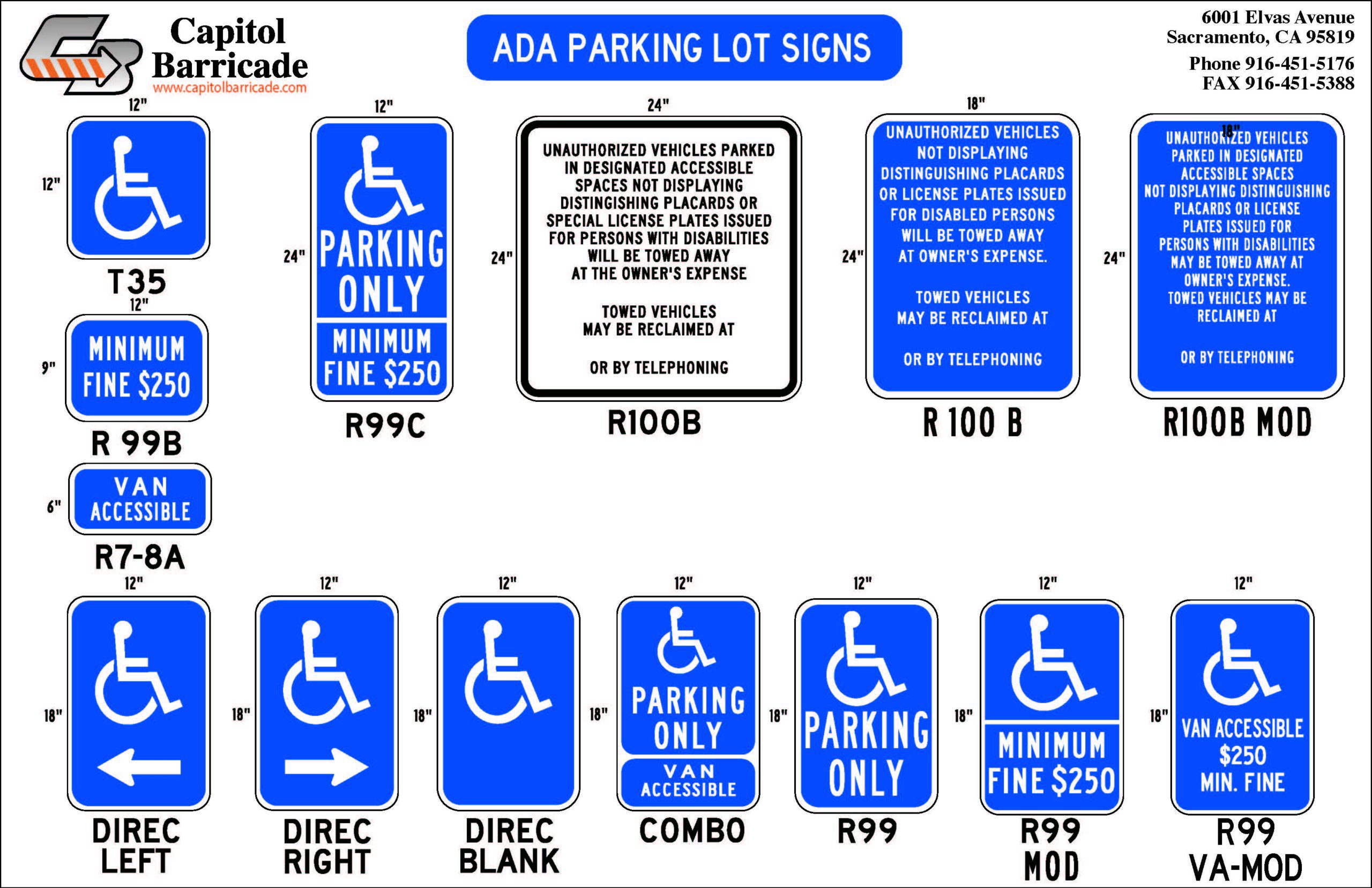ADA Signs: Necessary Tools for Inclusive Atmospheres
ADA Signs: Necessary Tools for Inclusive Atmospheres
Blog Article
Exploring the Trick Features of ADA Indications for Enhanced Ease Of Access
In the realm of availability, ADA indicators serve as quiet yet effective allies, guaranteeing that areas are navigable and inclusive for individuals with handicaps. By integrating Braille and tactile components, these signs damage barriers for the visually impaired, while high-contrast color schemes and understandable font styles cater to diverse aesthetic needs.
Importance of ADA Conformity
Ensuring conformity with the Americans with Disabilities Act (ADA) is crucial for fostering inclusivity and equivalent accessibility in public areas and offices. The ADA, passed in 1990, mandates that all public centers, employers, and transportation services fit individuals with disabilities, guaranteeing they appreciate the exact same legal rights and possibilities as others. Conformity with ADA requirements not just meets lawful obligations yet also enhances a company's reputation by showing its commitment to diversity and inclusivity.
Among the crucial elements of ADA conformity is the execution of easily accessible signs. ADA indicators are developed to make certain that people with handicaps can conveniently navigate with buildings and spaces. These indications need to adhere to specific standards relating to size, typeface, shade comparison, and positioning to assure exposure and readability for all. Appropriately implemented ADA signs helps eliminate obstacles that individuals with impairments often come across, thereby advertising their freedom and confidence (ADA Signs).
Moreover, sticking to ADA policies can minimize the risk of prospective fines and legal effects. Organizations that fall short to abide by ADA standards might face lawsuits or fines, which can be both monetarily troublesome and destructive to their public picture. Hence, ADA compliance is integral to fostering an equitable environment for every person.
Braille and Tactile Aspects
The consolidation of Braille and responsive aspects right into ADA signage embodies the concepts of ease of access and inclusivity. These functions are essential for individuals that are aesthetically impaired or blind, enabling them to browse public spaces with greater independence and confidence. Braille, a responsive writing system, is important in giving composed details in a style that can be conveniently perceived through touch. It is commonly placed beneath the matching message on signage to ensure that people can access the information without aesthetic support.
Tactile elements prolong past Braille and consist of elevated personalities and signs. These parts are developed to be noticeable by touch, allowing people to determine area numbers, restrooms, departures, and various other crucial locations. The ADA establishes certain guidelines concerning the size, spacing, and placement of these tactile elements to optimize readability and make certain uniformity throughout different atmospheres.

High-Contrast Color Pattern
High-contrast color pattern play a pivotal function in boosting the exposure and readability of ADA signs for individuals with aesthetic impairments. These plans are vital as they make the most of the distinction in light reflectance between message and background, guaranteeing that signs are quickly noticeable, also from a distance. The Americans with Disabilities Act (ADA) mandates the use of specific shade contrasts to accommodate those with limited vision, making it an essential element of compliance.
The efficiency of high-contrast colors exists in their capacity to stand apart in various illumination conditions, including poorly lit environments and areas with glare. Normally, dark message on a light background or light text on a dark history is employed to attain optimal contrast. As an example, black message on a white or yellow background supplies a raw visual difference that helps in fast recognition and comprehension.

Legible Fonts and Text Dimension
When considering the design of ADA signage, the option of readable typefaces and proper message dimension can not be overemphasized. These elements are essential for guaranteeing that indicators come to people with aesthetic problems. The Americans with Disabilities Act (ADA) mandates that typefaces must be not italic and sans-serif, oblique, script, extremely ornamental, or of unusual form. These requirements aid make certain that the text is easily readable from a distance and that the personalities are distinct to varied audiences.
According to ADA guidelines, the minimal message height should be 5/8 inch, and it needs to increase proportionally with seeing distance. Uniformity in text dimension adds to a cohesive visual experience, helping individuals in browsing environments successfully.
Moreover, spacing between lines and letters is essential to readability. Sufficient spacing prevents personalities from showing up crowded, improving readability. By sticking to these standards, designers can substantially boost ease of check over here access, making certain that signage serves its desired function for all individuals, regardless of their aesthetic capabilities.
Efficient Positioning Techniques
Strategic placement of ADA signage is necessary for making best use of access and guaranteeing conformity with lawful standards. ADA standards specify that indicators must be installed at a height in between 48 to 60 inches from the ground to ensure they are within the line of view for both standing and seated people.
Furthermore, indicators need to be placed surrounding to the lock side of doors to enable very easy identification prior to entrance. Uniformity in sign positioning throughout a facility improves predictability, reducing complication and improving overall customer experience.

Verdict
ADA signs play a crucial function in promoting availability by incorporating features that deal with the demands of people with handicaps. Including Braille and responsive elements makes sure important details is easily accessible to the visually impaired, while high-contrast color design and clear sans-serif font styles enhance exposure throughout different lights problems. Effective placement techniques, such as ideal placing elevations and strategic locations, even more assist in navigation. These components jointly cultivate a comprehensive setting, emphasizing the importance of ADA compliance in guaranteeing equivalent gain access to for all.
In the world of availability, ADA indications serve as look at this website quiet yet effective allies, making sure that spaces are inclusive and accessible for individuals with impairments. The ADA, enacted browse this site in 1990, mandates that all public centers, companies, and transportation solutions accommodate individuals with disabilities, guaranteeing they delight in the same civil liberties and chances as others. ADA Signs. ADA indicators are created to guarantee that individuals with specials needs can quickly navigate via structures and spaces. ADA standards state that indicators need to be placed at a height in between 48 to 60 inches from the ground to ensure they are within the line of view for both standing and seated people.ADA signs play a crucial role in advertising availability by integrating functions that deal with the demands of individuals with handicaps
Report this page